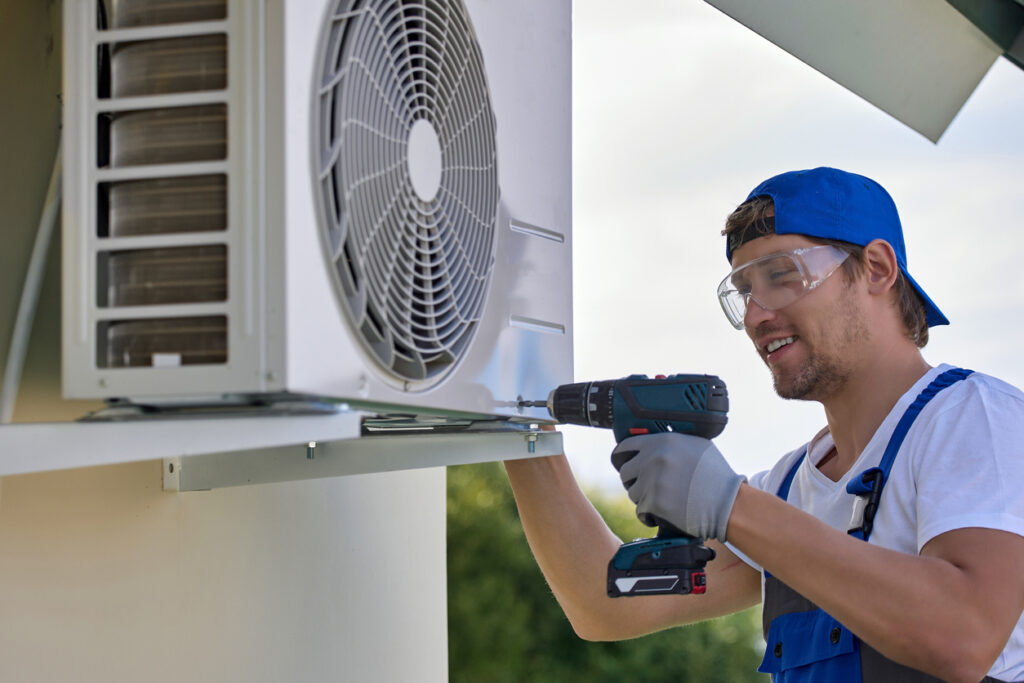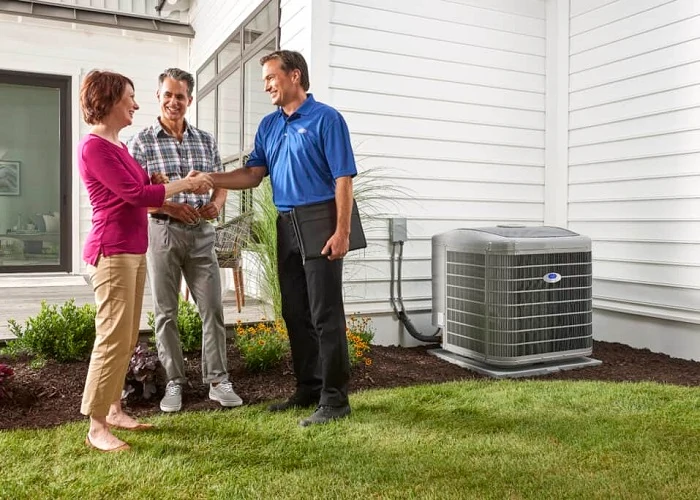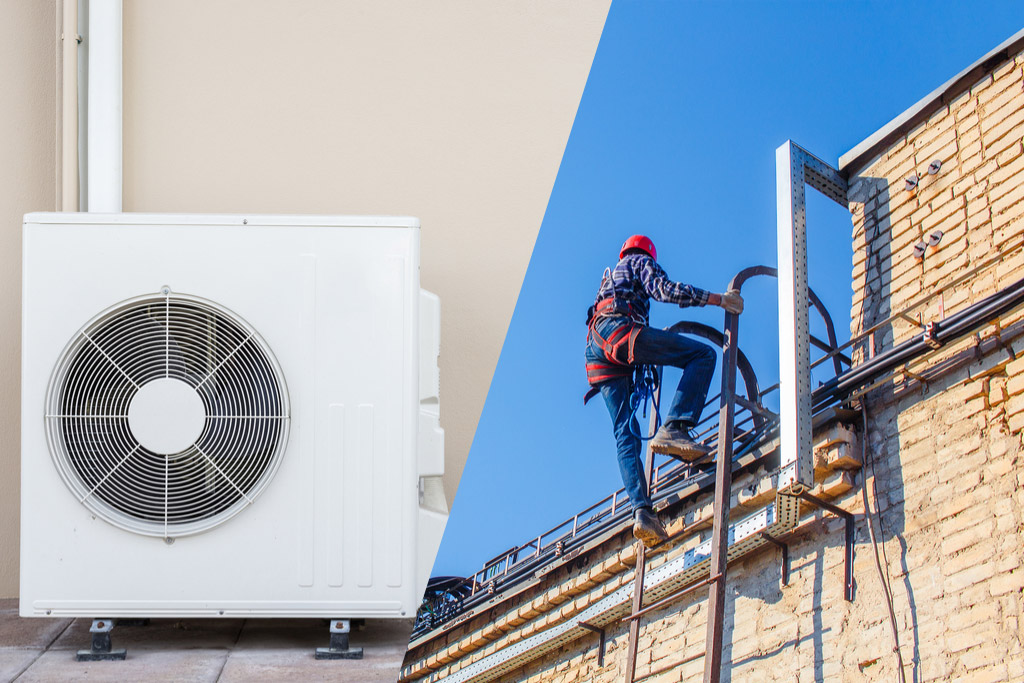What Should Hills District Homeowners Consider When Installing Air Conditioning?
nstalling an air conditioning system in your Hills District home requires careful planning and informed decision-making. The unique climate conditions, varying property sizes, and local regulations in this Sydney region create specific challenges that you need to address before committing to any installation project.
This Hills District air conditioning installation guide provides you with comprehensive insights into selecting the right system, choosing qualified installers, and ensuring compliance with local standards. You’ll discover how different air conditioning types perform in Hills District homes, what professional assessment processes involve, and which installation practices deliver optimal results.
The information presented here draws from industry expertise and real-world experiences of homeowners who have successfully navigated their air conditioning installation journey. You’ll learn about warranty options, maintenance requirements, and proven strategies for obtaining accurate quotes from reputable service providers.
Whether you’re replacing an existing system or installing air conditioning for the first time, this homeowner air conditioning guide equips you with the knowledge needed to make confident decisions that enhance your home’s comfort, efficiency, and value — all while ensuring the best results for air conditioning installation Hills District.

Which Types of Air Conditioning Systems Are Most Suitable for Homes in the Hills District?
The Hills District’s unique climate demands careful consideration when selecting an air conditioning system. Each type offers distinct advantages depending on your home’s layout, budget, and cooling requirements.
1. Ducted Air Conditioning Hills District
Ducted systems provide whole-home climate control through a network of ducts and vents. These systems excel in larger homes with multiple rooms, delivering consistent temperatures throughout the property. The central unit remains hidden in the roof space, maintaining your home’s aesthetic appeal. However, installation costs are higher, and the system requires adequate roof space for ductwork.
2. Split System Air Conditioners
Single split systems offer targeted cooling for individual rooms or zones. You can control each unit independently, making them energy-efficient for smaller spaces or specific areas. Installation is straightforward and cost-effective compared to ducted systems. The limitation lies in cooling capacity – you’ll need multiple units for larger homes, which can impact your exterior wall aesthetics.
3. Multi-Split Systems
Multi-split systems connect several indoor units to one outdoor unit, providing zoned cooling without extensive ductwork. This option suits homes where ducted systems aren’t feasible but multiple rooms require cooling. Installation complexity increases with the number of indoor units, and the outdoor unit requires sufficient space.
4. Evaporative Coolers
These systems work effectively in the Hills District’s drier periods, using water evaporation to cool air naturally. They’re environmentally friendly and cost-effective to operate. However, their effectiveness diminishes during humid conditions, making them less reliable during Sydney’s humid summer months.
How Can Homeowners Choose the Right Air Conditioning Installer in the Hills District?
Selecting the right installer requires careful evaluation of several critical factors that directly impact your system’s performance and longevity. Licensed air conditioning installers Hills District must hold valid certifications and comply with Australian refrigeration handling licences, ensuring they meet industry standards for safe installation practices.
Experience stands as a cornerstone when evaluating potential contractors. You should prioritise installers with extensive local knowledge of Hills District homes, as they understand the unique challenges posed by the area’s climate patterns and housing styles. Companies with decades of industry experience typically demonstrate superior problem-solving capabilities and installation expertise.
Family-owned HVAC companies Sydney often provide personalised service that larger corporations cannot match. These businesses build their reputation on customer satisfaction and word-of-mouth referrals, making them particularly invested in quality workmanship.
Key selection criteria include:
- Valid licensing and insurance coverage
- Proven track record with verifiable customer references
- Transparent pricing with detailed written quotes
- Warranty offerings on both equipment and workmanship
- Response times for service calls and installations
GAM Air Conditioning reviews consistently highlight their 50+ years of industry experience and family-business approach, with customers praising their punctuality and competitive pricing. Sydney Air Conditioning has earned recognition for their 100% satisfaction guarantee and comprehensive 5-year workmanship warranty, demonstrating their commitment to quality installations.
You should request multiple quotes from reputable installers to compare pricing, service offerings, and warranty terms before making your final decision.
What Steps Do Professionals Take to Assess a Home Before Installing an Air Conditioning System?
Professional installers begin their assessment with a comprehensive air conditioning site inspection that examines your home’s unique characteristics. This detailed evaluation forms the foundation for selecting the most appropriate cooling system for your specific needs.
The assessment process involves several critical measurements and observations:
- Room dimensions and ceiling heights – Accurate measurements of each space requiring cooling
- Window placement and glazing types – Identifying heat gain sources and their impact
- Insulation quality – Evaluating walls, ceilings, and floor insulation effectiveness
- Home orientation – Determining sun exposure patterns throughout the day
- Existing ductwork condition – Assessing current ventilation infrastructure
Professionals in Hills District perform heat load calculations using specialised software to process this data, taking into account local climate conditions and seasonal temperature variations. This calculation determines the precise cooling capacity required, measured in kilowatts or BTUs.
Experienced technicians also examine your home’s electrical capacity, checking whether your current switchboard can handle the new system’s power requirements. They identify the optimal placement for indoor and outdoor units, considering factors like accessibility for maintenance, noise levels, and aesthetic impact.
The inspection includes evaluating your home’s air circulation patterns and identifying any structural modifications needed for installation. This thorough approach ensures the recommended system will deliver optimal performance whilst maintaining energy efficiency standards specific to Hills District conditions.
What Installation Practices Should Be Followed to Ensure Optimal Performance and Compliance With Local Regulations?
Professional air conditioning installation Hills District requires following specific practices that ensure both system efficiency and compliance with regulations. Qualified installers implement these essential procedures to deliver reliable cooling solutions for your home.
Critical Installation Standards
Proper refrigerant line installation forms the foundation of efficient system operation. Technicians must ensure correct pipe sizing, secure connections, and appropriate insulation to prevent energy loss. Electrical connections require precise wiring according to manufacturer specifications, with proper circuit protection and grounding for safety.
Compliance local regulations HVAC installations demand strict adherence to Australian Standards AS/NZS 3000 and local council requirements. Licensed professionals understand these regulations and obtain necessary permits before commencing work. This includes:
- Electrical safety compliance through certified electrical work
- Structural integrity assessments for wall-mounted units
- Drainage requirements meeting plumbing codes
- Noise regulations consideration for neighbour relations
Quality Assurance Measures
Professional installers conduct thorough system commissioning, including refrigerant pressure testing, airflow verification, and thermostat calibration. They document all work performed and provide compliance certificates where required.
Companies like GAM Air Conditioning bring 50+ years of experience to ensure installations meet both performance expectations and regulatory standards. Their systematic approach prevents future issues whilst maintaining warranty validity through proper installation procedures.
How Does Proper Air Conditioning Installation Contribute to Improved Indoor Comfort and Health?
A professionally installed air conditioning system transforms your home into a healthier living environment by addressing multiple indoor air quality factors. Indoor air quality improvement AC Hills District residents experience stems from proper filtration systems that capture dust, pollen, and airborne contaminants before they circulate throughout your home.
Humidity Control
Your AC system’s ability to maintain consistent humidity control AC benefits Sydney climate conditions proves essential during Sydney’s humid summers. Properly installed units regulate moisture levels between 40-60%, preventing:
- Mould and mildew growth in damp areas
- Dust mite proliferation in bedrooms
- Respiratory irritation from excessive humidity
- Structural damage from moisture accumulation
Filtration
The filtration process removes microscopic particles that trigger allergies and asthma symptoms. High-quality HEPA filters installed during professional setup capture particles as small as 0.3 microns, including pet dander, bacteria, and smoke particles.
Temperature Consistency
Temperature consistency achieved through correct installation eliminates hot and cold spots that create discomfort and health issues. Your system maintains stable conditions that support better sleep patterns and reduce stress on your cardiovascular system.
Ventilation
Proper ventilation integration ensures fresh outdoor air circulation whilst filtering out pollutants. This balanced approach prevents stagnant indoor air that harbours bacteria and odours, creating a cleaner breathing environment for your family’s daily activities.

What Warranty and Maintenance Options Should Homeowners Look For After Installing an Air Conditioning System?
Understanding warranty coverage and maintenance requirements protects your investment and ensures optimal system performance for years to come. When evaluating workmanship warranty air conditioning Sydney options, you’ll encounter two distinct types of coverage that work together to safeguard your purchase.
Manufacturer warranties typically cover equipment defects and component failures, ranging from 5-10 years depending on the brand and system type. These warranties protect against manufacturing faults but exclude damage from improper installation or lack of maintenance. Installer warranties focus on workmanship quality, with reputable companies like Sydney Air Conditioning offering comprehensive 5-year workmanship warranties that cover installation-related issues.
Quality installers provide detailed warranty documentation outlining:
- Coverage duration and specific inclusions
- Required maintenance schedules to maintain validity
- Claim procedures and response timeframes
- Parts and labour coverage distinctions
Maintenance plans HVAC Hills District services become crucial for warranty compliance and system longevity. Regular servicing prevents minor issues from escalating into costly repairs whilst maintaining manufacturer warranty requirements. Professional maintenance includes filter replacements, refrigerant level checks, electrical connection inspections, and ductwork assessments.
You should prioritise installers offering structured maintenance packages with scheduled service visits. These programmes typically reduce emergency repair costs by 40-60% whilst extending system lifespan significantly. Many Hills District providers offer annual maintenance contracts with priority service calls and discounted repair rates, ensuring your air conditioning system operates efficiently throughout Sydney’s demanding climate conditions.
How Can Homeowners Obtain Accurate Quotes From Reliable Air Conditioning Service Providers In The Hills District?
Getting a free onsite quote air conditioning Hills District from multiple contractors provides you with several key advantages when planning your installation project. Professional assessments allow technicians to evaluate your home’s specific requirements, including room sizes, insulation levels, and existing electrical infrastructure.
You should request quotes from at least three different service providers to compare pricing structures and service offerings. Reputable companies like GAM Air Conditioning offer comprehensive onsite evaluations that consider your property’s unique characteristics rather than providing generic estimates over the phone.
Benefits of multiple onsite quotes include:
- Accurate pricing based on actual site conditions
- Identification of potential installation challenges
- Comparison of different system recommendations
- Understanding of warranty and service packages
- Assessment of each contractor’s professionalism and expertise
When requesting quotes, you should ask for detailed breakdowns covering equipment costs, labour charges, and any additional materials required. This transparency helps you make informed decisions and avoid unexpected expenses during installation. Quality installers will provide written quotes with clear timelines and specifications for the recommended air conditioning system.
You may also like to read: Stump Grinding Cost: What You Need to Know Before Hiring
FAQs: Air Conditioning Installation in the Hills District
Homeowners should evaluate property size, insulation quality, climate conditions, and compliance with local regulations before choosing a system.
The choice depends on your needs—ducted systems suit larger homes, split systems are great for single rooms, and evaporative coolers work best during dry periods.
Professional installers ensure compliance with Australian standards, proper system sizing, and safe installation practices that improve efficiency and extend system life.
Costs vary based on system type, home layout, and installation complexity. Ducted systems typically cost more than split or multi-split systems due to ductwork.
Most split system installations take a few hours, while ducted systems may require 1–3 days depending on the size of your property.
Installers must comply with Australian Standards (AS/NZS 3000), refrigeration handling licences, and local council requirements for safety, noise, and drainage.
Look for licensed, insured installers with strong local experience, transparent pricing, and verified customer reviews. Always request multiple written quotes.
Manufacturer warranties typically cover 5–10 years on equipment, while reputable installers often provide 5-year workmanship warranties.
Professional servicing is recommended at least once a year to maintain efficiency, warranty validity, and indoor air quality.
Yes—correct installation ensures even cooling, better humidity control, lower energy bills, and a healthier indoor environment.



